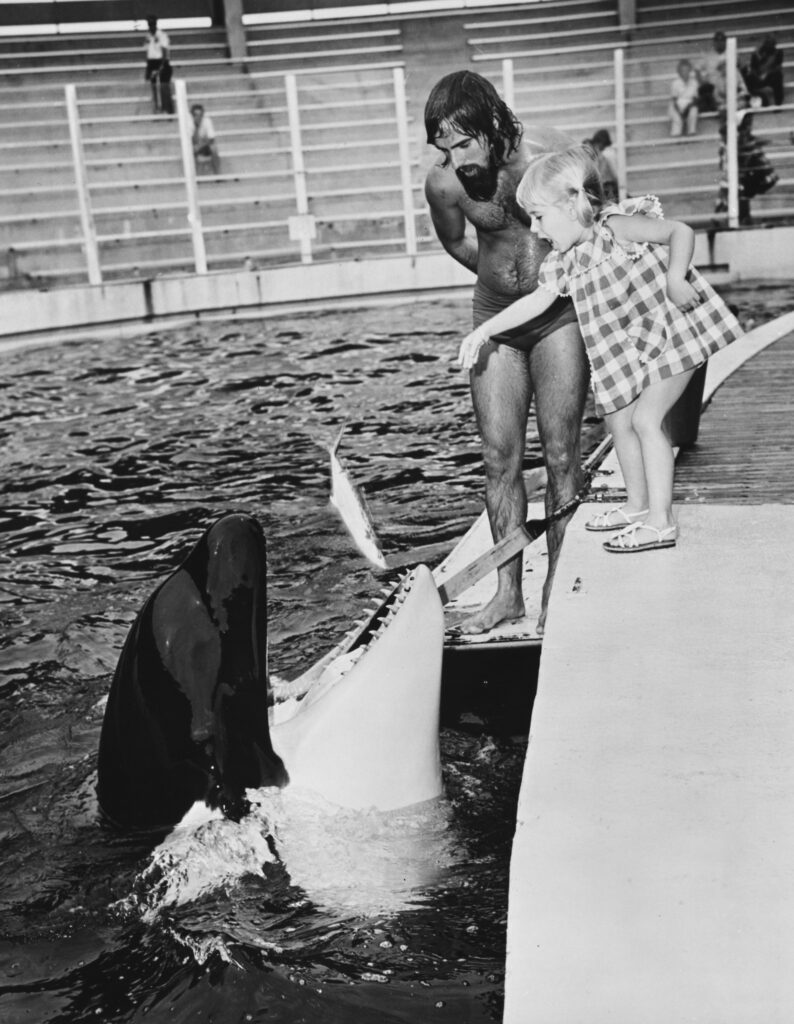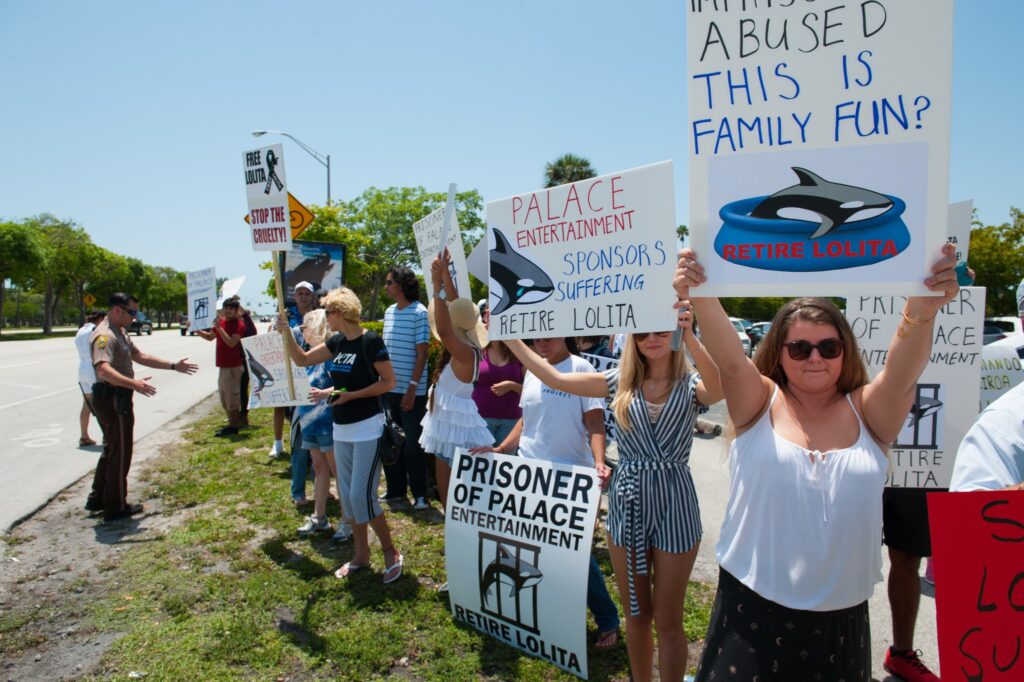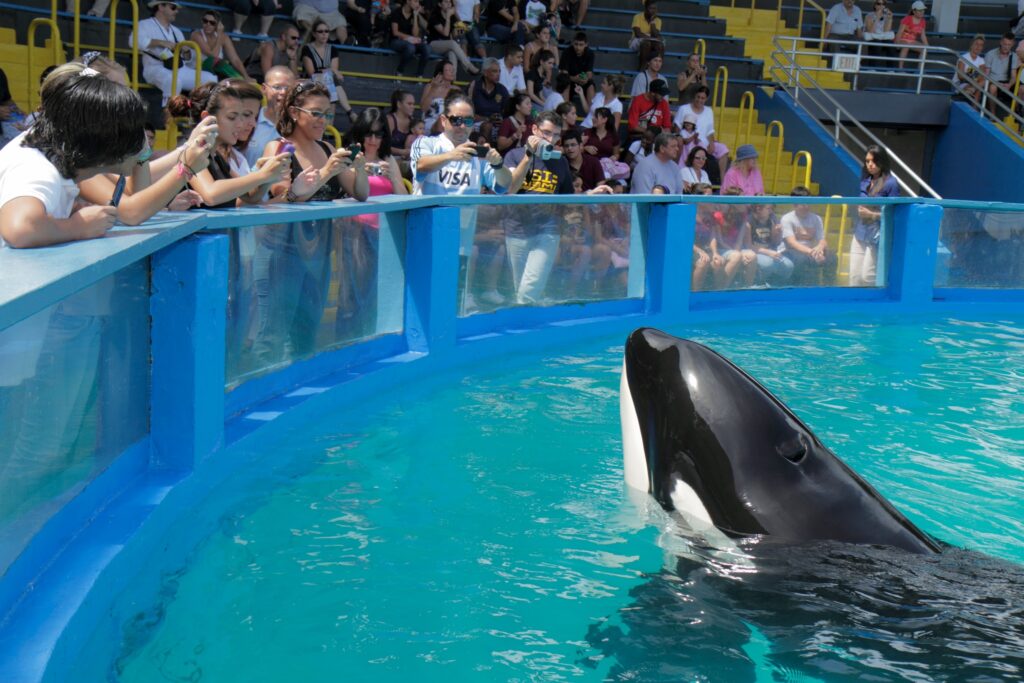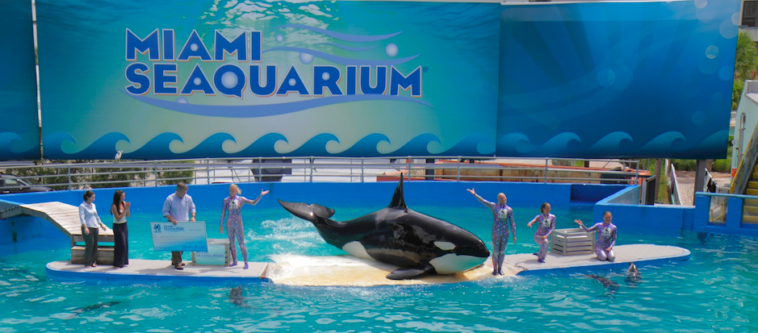A female orca, Lolita, who was captured as a baby from the Salish Sea in 1970 and then spent most of her life performing for her food at the Miami Seaquarium has been legally released by her new owners.

The Dolphin Company, the new owner of the Seaquarium, announced a deal with a Florida non-profit called Friends of Lolita “to bring to life the dream of returning Lolita to an ocean sanctuary,” said a press release from the Miami Seaquarium.
“It was a period of time when it seemed like a good idea to take these animals and make them jump for our pleasure.”
Eric Pittman of the Canadian Orca Rescue Society
The orca’s move to a cove off Washington State’s coast will be funded partly by a donation by Jim Irsay, owner of the American football team Indianapolis Colts, and led by Friends of Lolita, co-founded by environmentalists Pritam Singh and Charles Vinick.
The organization is working with marine mammal scientists Dr. Roger Payne, Dr. Diana Reiss, Lummi Nation elder Raynell Morris, and a team of veterinarians and trainers.
“They have one of the largest brains of all creatures.”
Eric Pittman of the Canadian Orca Rescue Society
The 57-year-old orca–known as Lolita, Tokitae, Toki, and Sk’aliCh’elh-tenaut– was among dozens of animals captured in a series of round-ups permitted by the U.S. and Canadian governments in the 1960s and 70s.
“It was a period of time when it seemed like a good idea to take these animals and make them jump for our pleasure,” Eric Pittman of the Canadian Orca Rescue Society told West Coast Now. “It’s so inhumane to keep a creature like that. They have one of the largest brains of all creatures.”
Activists in Canada and the U.S. campaigned for years to have the orca released.
Members of the Lummi Nation in Washington State had threatened to sue the Miami Seaquarium under the U.S. Native American Graves Protection and Repatriation Act unless it agreed to “safely bring Sk’aliCh’elh-tenaut back home to her family in the Salish Sea.”
“We place the highest priority on the well-being of animals, above all else,”
Eduardo Albor, CEO of The Dolphin Company
But the orca’s release was only possible after the Dolphin Company took over the Florida water entertainment park.

“We place the highest priority on the well-being of animals, above all else,” said Eduardo Albor, CEO of The Dolphin Company, in the announcement. “Finding a better future for Lolita is one of the reasons that motivated us to acquire the Miami Seaquarium.
The detailed plan for her return, outlined on the Lummi Nation website, shows the whale still has a long path ahead of her. She has to first be shipped home to the Salish Sea, then rehabilitated to live in the wild, and finally, if it’s possible, be reunited with her mother Ocean Sun, who Pittman said is now nearly 90 years old.
“They’re going to have to care for her for a period of time and teach her to fend for herself,” said Pittman.

There are fewer than 80 Southern Resident orcas left in the world, he noted.
Science studies show that their survival is threatened by mostly human causes, including pollution, toxic toilet paper, shipping threats, inbreeding, and decline in salmon, their only food.
The fear, said Pittman, is that the orcas have to work harder every year to survive, and “she may not be able to keep up .”
But even if something happens to her in the wild, he said, “it’s arguably better than being in captivity.”






